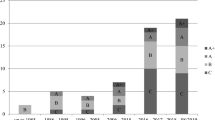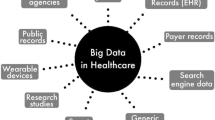Abstract
Business intelligence (BI) offers tremendous potential for business organizations to gain insights into their day-to-day operations, as well as longer term opportunities and threats. However, most of today’s BI tools are based on models that are too much data-oriented from the point of view of business decision makers. We propose an enterprise modeling approach to bridge the business-level understanding of the enterprise with its representations in databases and data warehouses. The business intelligence model (BIM) offers concepts familiar to business decision making—such as goals, strategies, processes, situations, influences, and indicators. Unlike many enterprise models which are meant to be used to derive, manage, or align with IT system implementations, BIM aims to help business users organize and make sense of the vast amounts of data about the enterprise and its external environment. In this paper, we present core BIM concepts, focusing especially on reasoning about situations, influences, and indicators. Such reasoning supports strategic analysis of business objectives in light of current enterprise data, allowing analysts to explore scenarios and find alternative strategies. We describe how goal reasoning techniques from conceptual modeling and requirements engineering have been applied to BIM. Techniques are also provided to support reasoning with indicators linked to business metrics, including cases where specifications of indicators are incomplete. Evaluation of the proposed modeling and reasoning framework includes an on-going prototype implementation, as well as case studies.

















Similar content being viewed by others
Notes
We use the terms “enterprise model” and “business model” in a conceptual modeling sense, i.e., a collection of elements and relationships typically having a graphical representation, and not in the business sense of how an organization creates, delivers, and captures value.
References
Isik, O., Jones, M.C., Sidorova, A.: Business intelligence (BI) success and the role of BI capabilities. Intell. Syst. Account. Finance Manag. 18(4), 161–176 (2011)
IBM: Cognos Express Reporter. http://www-01.ibm.com/software/analytics/cognos/express/reporter/ (2012). Accessed Apr 2012
Stroh, F., Winter, R., Wortmann, F.: Method support of information requirements analysis for analytical information systems. Bus. Inf. Syst. Eng. 3(1), 33–43 (2011)
Kaplan, R.S., Norton, D.P.: Strategy Maps: Converting Intangible Assets into Tangible Outcomes. Harvard Business School Press, Cambridge (2004)
Dealtry, T.R.: Dynamic SWOT Analysis. Dynamic SWOT Associates, Birmingham (1994)
Object Management Group: Business Motivation Model, Version 1.0. Technical Report May, Object Management Group (2002). http://www.omg.org/spec/BMM/1.0/
Barone, D., Mylopoulos, J., Jiang, L., Amyot, D.: Business intelligence model, ver. 1.0. Technical Report CSRG-607. Department of Computer Science, University of Toronto (2010). ftp://ftp.cs.toronto.edu/csrg-technical-reports/607/
Barone, D., Yu, E., Won, J., Jiang, L., Mylopoulos, J.: Enterprise modeling for business intelligence. In: The Practice of Enterprise Modeling, 3rd IFIP WG8.1 (PoEM’10). LNBIP, vol. 68, pp. 31–45. Springer, Berlin (2010)
Barone, D., Peyton, L., Rizzolo, F., Amyot, D., Mylopoulos, J.: Towards model-based support for managing organizational transformation. In: E-Technologies: Transforma-tion in a Connected World. Lecture Notes in Business Information Processing, vol. 78, pp. 17–31. Springer, Berlin (2011)
Jiang, L., Barone, D., Amyot, D., Mylopoulos, J.: Strategic models for business in-telligence: reasoning about opportunities and threats. In: Proceedings of the 30th International Conference on Conceptual Modeling (ER’11). LNCS, vol. 6998, pp. 429–443. Springer, Berlin (2011)
Barone, D., Jiang, L., Amyot, D., Mylopoulos, J.: Composite indicators for business in-telligence. In: Proceedings of the 30th International Conference on Conceptual Modeling (ER’11). LNCS, vol. 6998, pp. 448–454. Springer, Berlin (2011)
Barone, D., Jiang, L., Amyot, D., Mylopoulos, J.: Reasoning with key performance indicators. In: Proceedings of the 4th IFIP WG8.1 Working Conference on the Practice of Enterprise Modeling (PoEM11), pp. 82–96 (2011)
Stirna, J., Persson, A.: Ten years plus with EKD: reflections from using an enterprise modeling method in practice. In: Proceedings of the 11th International Workshop on Exploring Modeling Methods in Systems Analysis and Design (EMMSAD07), pp. 99–108. Springer, Berlin (2007)
Rolland, C., Prakash, N.: Bridging the gap between organisational needs and ERP functionality. Requir. Eng. 5(3), 180–193 (2000)
Chung, L., Nixon, B.A., Yu, E., Mylopoulos, J.: Non-Functional Requirements in Soft-ware Engineering. International Series in Software Engineering, vol. 5. Kluwer Academic Publishers, Dordrecht (2000)
Dardenne, A., Lamsweerde, A.V., Fickas, S.: Goal-directed requirements acquisition. Sci. Comput. Program. 20(1–2), 3–50 (1993)
Yu, E.: Towards modelling and reasoning support for early-phase requirements en-gineering. In: Proceedings of 3rd IEEE International Symposium on Requirements Engineering. pp. 226–235. IEEE Comput. Soc. Press, New York (1997)
ITU-T, Intern. Telecom. Union: Recommendation Z.151 (11/08): Recommendation Z.151 (11/08) User Requirements Notation (URN) Language definition. Technical Report, ITU-T International Telecommunications Union, Geneva (2008)
Giorgini, P., Mylopoulos, J., Nicchiarelli, E., Sebastiani, R.: Reasoning with goal models. In: Proceedings of the 21st International Conference on Conceptual Model-ing (ER’02). LNCS, vol. 3084, pp. 167–181. Springer, Berlin (2002)
Giorgini, P., Mylopoulos, J., Sebastiani, R.: Simple and minimum-cost satisfiability for goal models. In: Proceedings of the 16th Conference On Advanced Information Systems Engineering (CAiSE’04). LNCS, vol. 3084, pp. 20–35. Springer, Berlin (2004)
Wetzel, T.: States of affairs. In: The Stanford Encyclopedia of Philosophy (Fall 2008 Edition), Stanford University, Stanford (2008)
Parmenter, D.: Key Performance Indicators. Wiley, New York (2007)
Bresciani, P., Perini, A., Giorgini, P., Giunchiglia, F., Mylopoulos, J.: Tropos: an agent-oriented software development methodology. Auton. Agents MultiAgent Syst. 8(3), 203–236 (2004)
Uchil, A.: Goals-Based Strategic Planning: A No-Nonsense Practical Guide to Strategy. Outskirts Press, Denver (2009)
Kaplan, R.S., Norton, D.P.: The balanced scorecard: measures that drive performance. Harv. Bus. Rev. 70(1), 71–79 (1992)
Basili, V., Rombach, H.: The TAME project: towards improvement-oriented software environments. IEEE Trans. Softw. Eng. 14(6), 758–773 (1998)
Letier, E., Lamsweerde, A.V.: Reasoning about partial goal satisfaction for requirements and design engineering. ACM SIGSOFT Softw. Eng. Notes 29(6), 53–62 (2004)
Amyot, D., Ghanavati, S., Horkoff, J., Mussbacher, G., Peyton, L., Yu, E.: Evaluating goal models within the goal-oriented requirements language. Int. J. Intell. Syst. 25(8), 841–877 (2010)
Horkoff, J., Yu, E.: Interactive analysis of agent-goal models in enterprise modeling. Int. J. Inf. Syst. Model. Des. (IJISMD) 1(4), 1–23 (2010)
Giorgini, P., Mylopoulos, J., Nicchiarelli, E., Sebastiani, R.: Formal reasoning techniques for goal models. J. Data Semant. 1, 1–20 (2004)
Giorgini, P., Mylopoulos, J., Sebastiani, R.: Goal-oriented requirements analysis and reasoning in the Tropos methodology. Eng. Appl. Artif. Int. 18(2), 159–171 (2005)
Elahi, G., Yu, E.: Requirements trade-offs analysis in the absence of quantitative mea-sures: a heuristic method. In: Proceedings of the 2011 ACM Symposium on Applied Computing, SAC ’11, pp. 651–658. ACM, New York (2011)
Lamsweerde, A.V.: Reasoning about alternative requirements options. In: Conceptual Modeling Foundations and Applications. LNCS, vol. 5600, pp. 380–397. Springer, Berlin (2009)
Horkoff, J., Yu, E.: Finding solutions in goal models: an interactive backward reasoning approach. In: Proceedings of the 29th International Conference on Conceptual Modeling (ER’10). LNCS, vol. 6412, pp. 59. Springer, Berlin (2010)
Howard, R.A., Matheson, J.E.: Influence diagrams. Decis. Anal. 2(3), 127–143 (2005)
Pourshahid, A., Chen, P., Amyot, D., Forster, A.J., Ghanavati, S., Peyton, L., Weiss, M.: Business process management with the user requirements notation. Electron. Commer. Res. 9(4), 269–316 (2009)
Saaty, T.L.: How to make a decision: the analytic hierarchy process. Eur. J. Oper. Res. 48, 9–26 (1990)
University of Ottawa: jUCMNav. http://softwareengineering.ca/jucmnav/ (2011). Accessed Sept 2011
Open Model Initiative: Open Model Initiative. http://www.openmodels.at/web/omi/resources (2011). Accessed Sept 2011
GR-Tool: GR-Tool. http://troposproject.org/tools/grtool/ (2010). Accessed Dec 2010
Loboda, T.D., Voortman, M.: GeNIe. http://genie.sis.pitt.edu (2012). Accessed Aug 2012
Eclipse Foundation: Graphiti. http://www.eclipse.org/graphiti/ (2011). Accessed Sept 2011
Singular Systems: Jep Java. http://www.singularsys.com/jep/ (2011). Accessed Sept 2011
Barone, D., Topaloglou, T., Mylopoulos, J.: Business intelligence modeling in action: a hospital case study. In: Proceedings of the 24th Conference on Advanced Information Systems Engineering (CAiSE’12). LNCS, vol. 7328, pp. 502–517. Springer, Berlin (2012)
The Open Group: ArchiMate 2.0: An Open Group Standard. http://pubs.opengroup.org/architecture/archimate2-doc/ (2012). Accessed Aug 2012
Sutherland, J.: Business objects in corporate information systems. ACM Comput. Surv. 27(2), 274–276 (1995)
Loucopoulos, P., Katsouli, E.: Modelling business rules in an office environment. SIGOIS Bull. 13(2), 28–37 (1992)
Jablonski, S.: On the complementarity of workflow management and business process modeling. SIGOIS Bull. 16(1), 33–38 (1995)
Object Management Group: Business Process Modeling Notation (BPMN) Version 2.1. Technical Report (2009). http://www.omg.org/spec/BPMN/1.2/
Kaplan, R.S., Norton, D.P.: Balanced Scorecard: Translating Strategy into Action. Harvard Business School Press, Cambridge (1996)
Elahi, G., Yu, E., Zannone, N.: A vulnerability-centric requirements engineering frame-work: analyzing security attacks, countermeasures, and requirements based on vulnera-bilities. Requir. Eng. 15(1), 41–62 (2010)
Pourshahid, A., Richards, G., Amyot, D.: Toward a goal-oriented, business intelligence decision-making framework. In: Proceeding of E-Technologies: Transformation in a Connected World. LNBIP, vol. 78, pp. 100–115. Springer, Berlin (2011)
Popova, V., Sharpanskykh, A.: Formal modelling of organisational goals based on per-formance indicators. Data Knowl. Eng. 70(4), 335–364 (2011)
Souza, V., Lapouchnian, A., Mylopoulos, J.: System identification for adaptive software systems: a requirements-engineering perspective. In: Proceedings of the 30th International Conference on Conceptual Modeling (ER’11). LNCS, vol. 6998, pp. 346–361 (2011)
Souza, V., Mazón, J.N., Garrigós, I., Trujillo, J., Mylopoulos, J.: Monitoring strategic goals in data warehouses with awareness requirements. In: Proceedings of the 27th ACM Symposium on Applied, Computing, pp. 1075–1082 (2012)
Pentaho Corporation: Pentaho: Open Source Business Intelligence. http://www.pentaho.com/ (2011). Accessed Sept 2011
Author information
Authors and Affiliations
Corresponding author
Additional information
Communicated by Dr. Tony Clark, Balbir Barn, Alan Brown, and Florian Matthes.
Rights and permissions
About this article
Cite this article
Horkoff, J., Barone, D., Jiang, L. et al. Strategic business modeling: representation and reasoning. Softw Syst Model 13, 1015–1041 (2014). https://doi.org/10.1007/s10270-012-0290-8
Received:
Revised:
Accepted:
Published:
Issue Date:
DOI: https://doi.org/10.1007/s10270-012-0290-8




